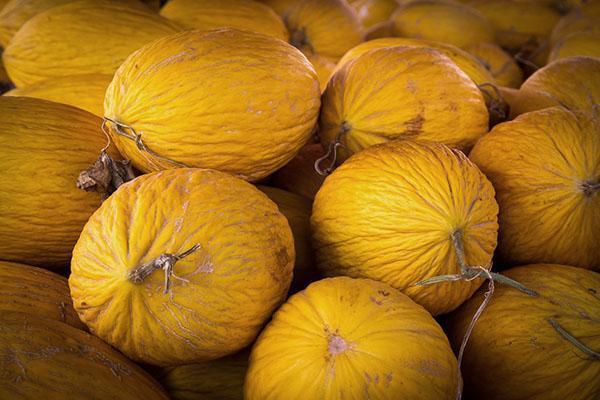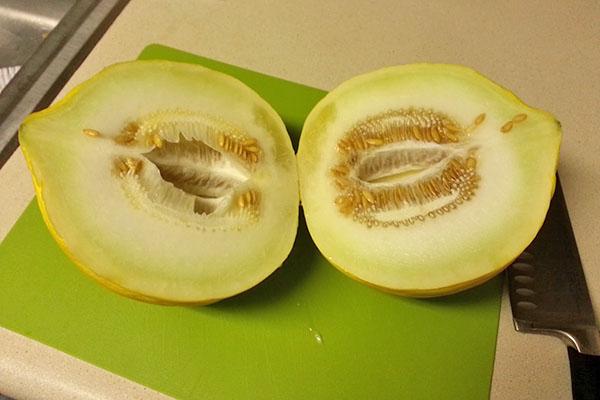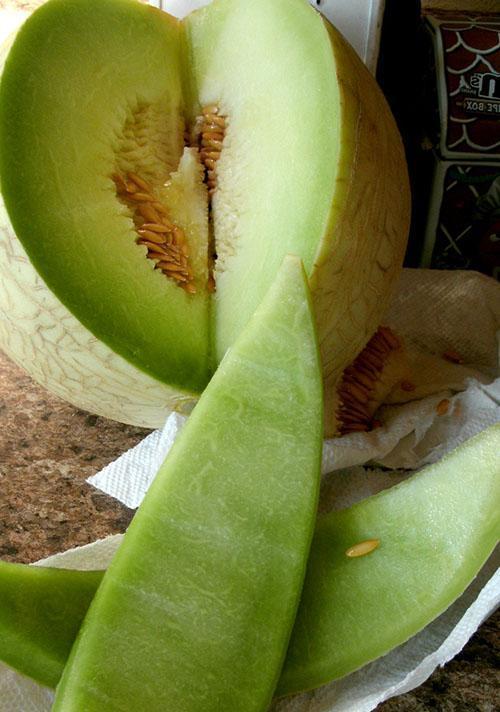A native of Asia Minor, melon Kassaba
 Melons Kassaba or Melo cassaba are people from Asia Minor and Central Asia. The ancient variety is famous for the fact that the sweetness and record juiciness of the fruits are gained not on melons, but already during storage.
Melons Kassaba or Melo cassaba are people from Asia Minor and Central Asia. The ancient variety is famous for the fact that the sweetness and record juiciness of the fruits are gained not on melons, but already during storage.
Unlike well-known to Europeans melon cantaloupe, kassabs are practically devoid of a pronounced aroma. Fruits of this species are round or barely flattened; many varieties have a noticeable mastoid protrusion at the base. Kassab leather, depending on the variety, can be smooth, covered with a mesh pattern or wrinkled. In some varieties, even on mature fruits, hairs are visible, usually inherent only in the ovaries of melons. The flesh on the cut is dense, in freshly cut fruits it is grassy with a cucumber aroma. Plants melon kassaba are of medium size. Leaves are attached to pubescent lashes with short, strong petioles.
According to the ripening period and the area where this type of melons is grown, melons of the cassaba type are conventionally divided into three varieties.
Summer melons kassaba

- Kassaba Zhukovsky is a melon with spherical or barely flattened, medium-weight fruits. On the yellow, smooth or slightly wrinkled skins of the melons, you may notice strokes and spots of a dark green hue.
- Cassaba spotted in shape, size and quality of the pulp is similar in the Zhukovsky variety, but the black-green spots on the peel are more noticeable and remain after the melon is fully ripe.
- Honeydew or honeydew melon differs from the varieties described above with a smooth or barely meshy fruit bark.
All summer cassabs have a characteristic melting or slightly fibrous thick flesh with a high sugar content in ripe fruits.
 It is almost impossible to store these melons, which is why they are most often used for local application in growing regions.
It is almost impossible to store these melons, which is why they are most often used for local application in growing regions.
Kassabs of the autumn-winter ripening period
The autumn-winter kassabs, identified as the hassanbey variety, are larger than the early ones and are distinguished by a more wrinkled fruit surface.
Ripening occurs only during storage, as a result of which, subject to special conditions, melons are stored for 1 to 3 months.
In Karakalpakstan and in the vicinity of Khorezm, melons Gurvak or Gurbek are grown, also belonging to the kassabs, but differing from them in a round or oval shape without a protrusion and an almost smooth bark surface.
 A cut of the melon shows a juicy greenish pulp and a small cavity filled with large white or yellowish cream seeds. Melons of this variety ripen 75-105 days, but for the plucked fruits to become sweet, they must be aged. Upon reaching physiological ripeness, the melon is not transportable and is used only for local consumption.
A cut of the melon shows a juicy greenish pulp and a small cavity filled with large white or yellowish cream seeds. Melons of this variety ripen 75-105 days, but for the plucked fruits to become sweet, they must be aged. Upon reaching physiological ripeness, the melon is not transportable and is used only for local consumption.
Melon lowers glucose in diabetics. Use them for healing. Health to you.